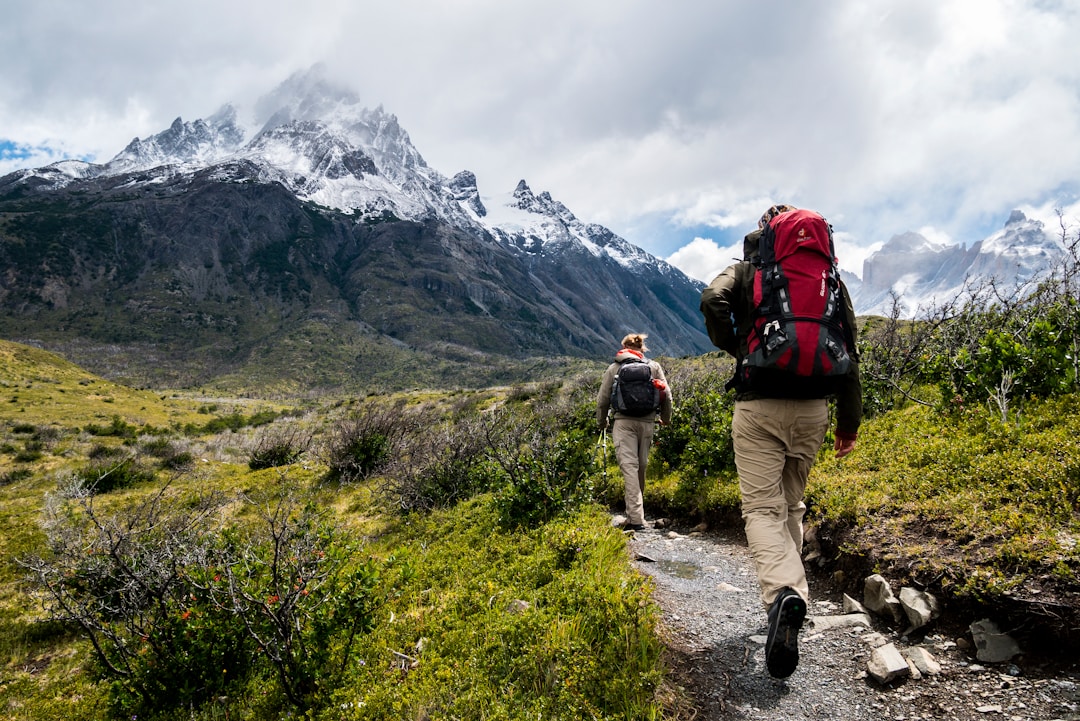Hiking is a popular outdoor activity that allows people to connect with nature and explore beautiful landscapes. However, it is important to remember that hiking can also be dangerous, especially if you are not adequately prepared. That's why having a hiking survival gear checklist is essential. In this blog post, we will discuss the importance of being prepared for hiking, and provide a comprehensive guide to the essential items that should be included in your hiking survival gear checklist.
Key Takeaways
Being prepared with the right gear is crucial for a safe and enjoyable hiking experience.
A basic hiking survival gear checklist should include items such as a map, compass, first aid kit, and emergency communication device.
Proper clothing and footwear are essential for comfort and protection on the trail.
Navigation tools such as GPS devices and trail markers can help hikers stay on track and avoid getting lost.
Emergency communication devices like satellite phones and personal locator beacons can be lifesaving in remote areas.
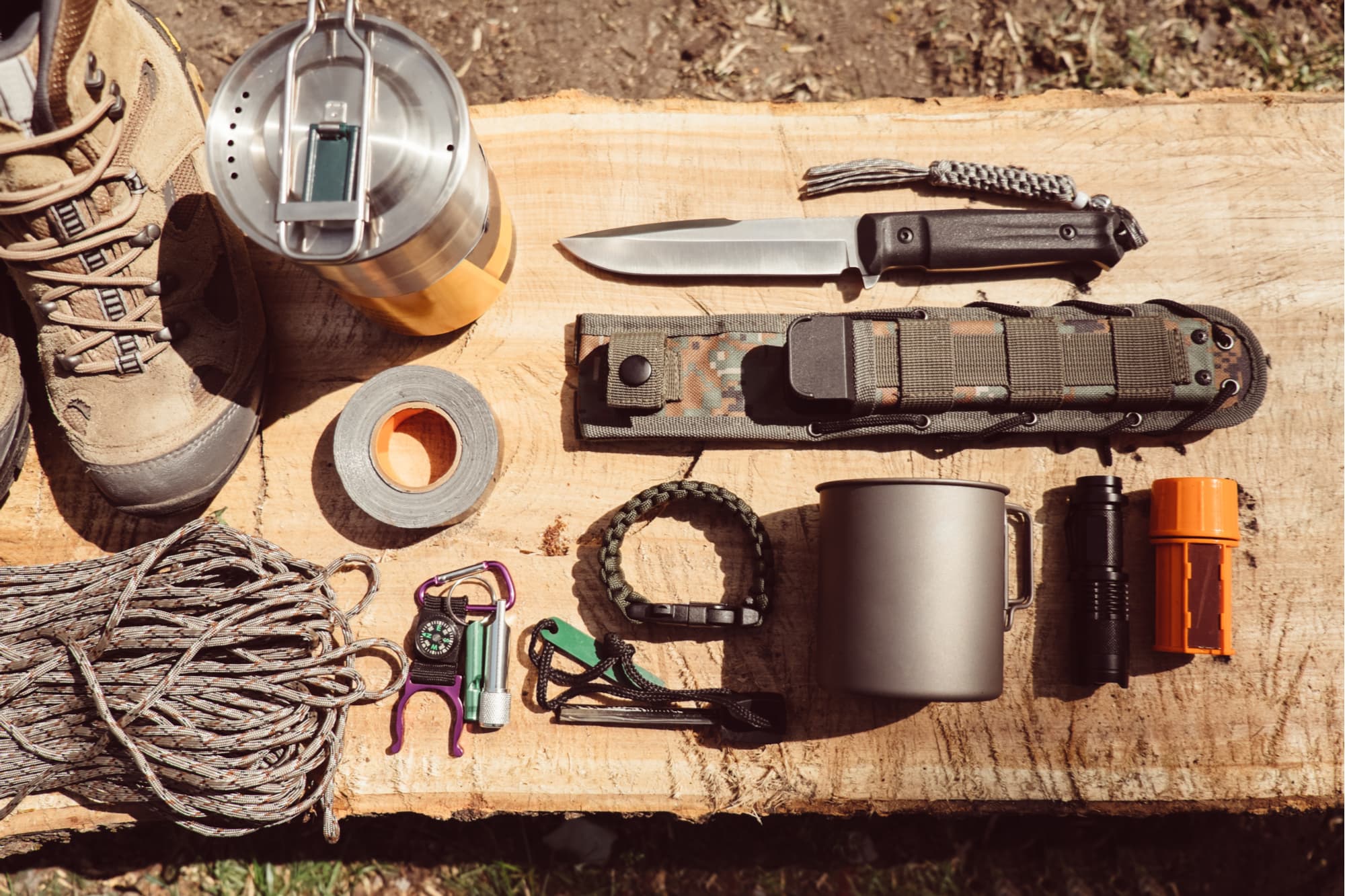
The Importance of Being Prepared for Hiking
Hiking may seem like a harmless activity, but it can quickly turn into a dangerous situation if you are not prepared. There are several potential dangers that hikers may face, such as getting lost, encountering wildlife, or experiencing extreme weather conditions. In these situations, having the right gear can make all the difference.
Being prepared for emergencies is crucial when hiking because help may not be readily available. In remote areas, it may take hours or even days for rescue teams to reach you. By having the necessary survival gear, you can increase your chances of staying safe and surviving until help arrives.
Real-life examples highlight the importance of being prepared while hiking. There have been numerous cases where hikers have gotten lost or injured and were unable to call for help. In some cases, these situations have resulted in tragic outcomes. By taking the time to prepare and pack the right gear, you can significantly reduce the risks associated with hiking.
Basic Hiking Survival Gear Checklist
Now that we understand the importance of being prepared for hiking, let's take a look at the essential items that should be included in your hiking survival gear checklist:
1. Map and Compass: These navigation tools are crucial for finding your way on the trail and preventing getting lost.
2. Headlamp or Flashlight: A reliable light source is essential for navigating in low-light conditions or during emergencies.
3. Whistle: A whistle can be used to signal for help if you are lost or injured.
4. Fire Starter: Having a fire starter, such as waterproof matches or a lighter, can help keep you warm and provide a source of light and cooking.
5. Knife or Multi-tool: A versatile tool like a knife or multi-tool can be used for various tasks, such as cutting rope or opening cans.
6. First Aid Kit: A well-stocked first aid kit is essential for treating minor injuries and providing immediate medical attention until help arrives.
7. Water Purification System: Carrying a water purification system, such as water purification tablets or a portable water filter, allows you to safely drink water from natural sources.
8. Extra Clothing: Pack extra layers of clothing to protect yourself from changing weather conditions and to stay warm in case of emergencies.
9. Food and Snacks: Carry enough food and snacks to sustain your energy levels during the hike.
10. Emergency Shelter: A lightweight emergency shelter, such as a bivy sack or emergency blanket, can provide protection from the elements if you are stranded overnight.
When choosing gear for your hiking survival checklist, consider factors such as weight, durability, and functionality. Opt for lightweight options that won't weigh you down during your hike. Additionally, make sure that your gear is durable enough to withstand the rigors of the trail.
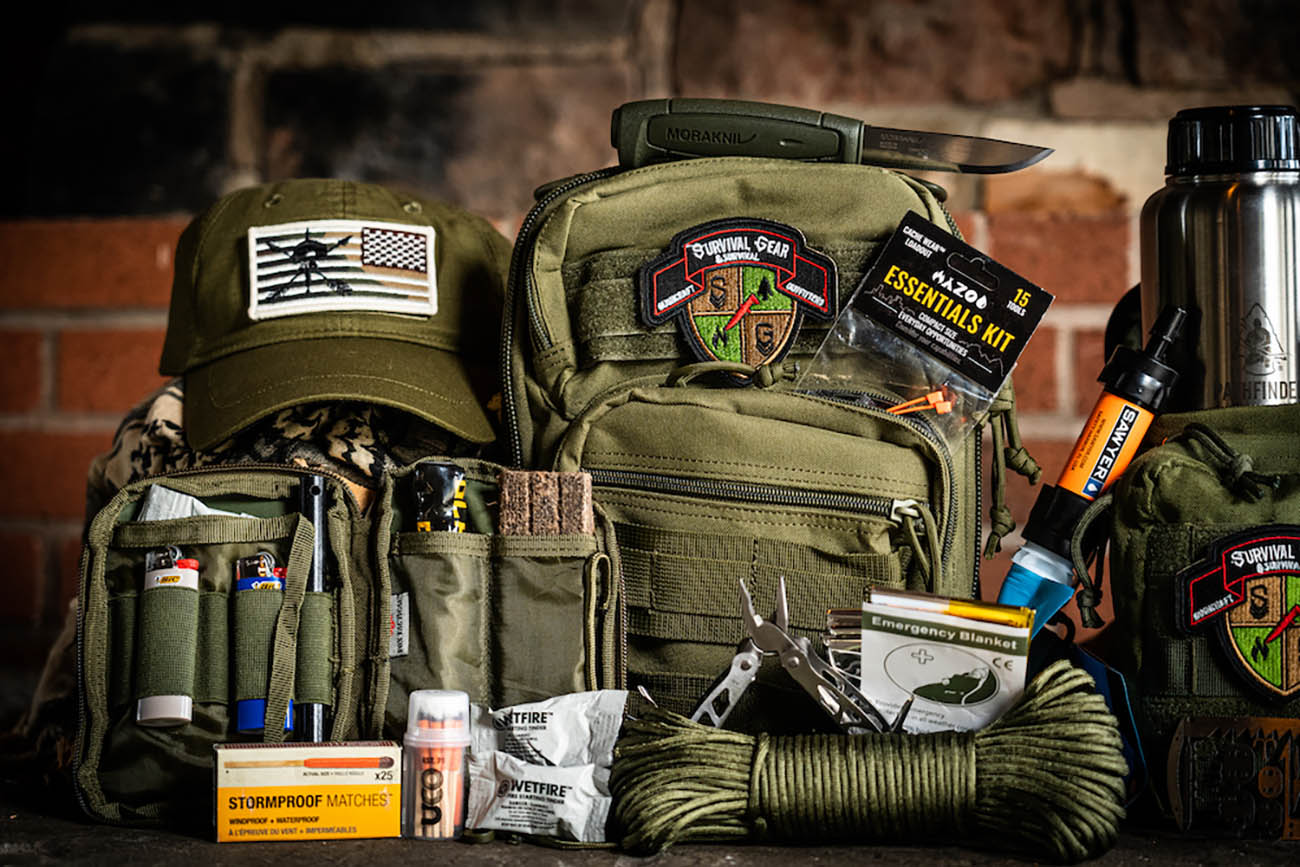
Clothing and Footwear Essentials for Hiking
| ||
|---|---|---|
Item | Description | Importance |
Hiking Boots | Durable, waterproof footwear with good ankle support | Essential |
Moisture-wicking Socks | Prevents blisters and keeps feet dry | Essential |
Quick-drying Pants | Lightweight, breathable pants that dry quickly | Important |
Long-sleeve Shirt | Protects from sun and bugs | Important |
Waterproof Jacket | Protects from rain and wind | Important |
Sun Hat | Protects face and neck from sun | Important |
Gloves | Protects hands from cold and rough terrain | Optional |
Gaiters | Protects ankles and lower legs from debris and water | Optional |
Wearing appropriate clothing and footwear is crucial for a safe and comfortable hiking experience. Here are the essential clothing and footwear items that should be included in your hiking survival gear checklist:
1. Moisture-wicking Base Layers: Choose base layers made of moisture-wicking materials that will keep you dry and comfortable during your hike.
2. Insulating Layers: Pack insulating layers such as fleece jackets or down vests to keep you warm in colder temperatures.
3. Waterproof Outer Layers: Invest in a waterproof and breathable jacket and pants to protect yourself from rain, wind, and snow.
4. Hiking Boots: Choose sturdy hiking boots that provide ankle support and have a good grip to prevent slips and falls.
5. Socks: Pack moisture-wicking socks made of wool or synthetic materials to keep your feet dry and prevent blisters.
6. Hat and Gloves: Protect your head and hands from the sun, wind, and cold temperatures with a hat and gloves.
When choosing clothing and footwear for hiking, consider the weather conditions and terrain you will be encountering. Opt for layers that can be easily added or removed depending on the temperature. Additionally, make sure that your footwear is broken in before your hike to prevent discomfort or blisters.
Navigation Tools for Hiking Trails
Navigation tools are essential for staying on track and finding your way on hiking trails. Here are the essential navigation tools that should be included in your hiking survival gear checklist:
1. Map: Carry a detailed map of the area you will be hiking in. Familiarize yourself with the trail before setting out.
2. Compass: A compass is a reliable tool for determining direction and orienting yourself on the map.
3. GPS Device: Consider carrying a GPS device or smartphone with GPS capabilities as a backup navigation tool.
4. Trail Markers: Look for trail markers such as signs, blazes, or cairns to stay on the designated trail.
5. Guidebook or Trail Description: Carry a guidebook or trail description that provides information about the trail's features, difficulty level, and points of interest.
Before your hike, study the map and familiarize yourself with the trail's route. Practice using a compass to determine direction and navigate using landmarks. It is also helpful to have a backup navigation tool, such as a GPS device or smartphone with GPS capabilities, in case of emergencies.
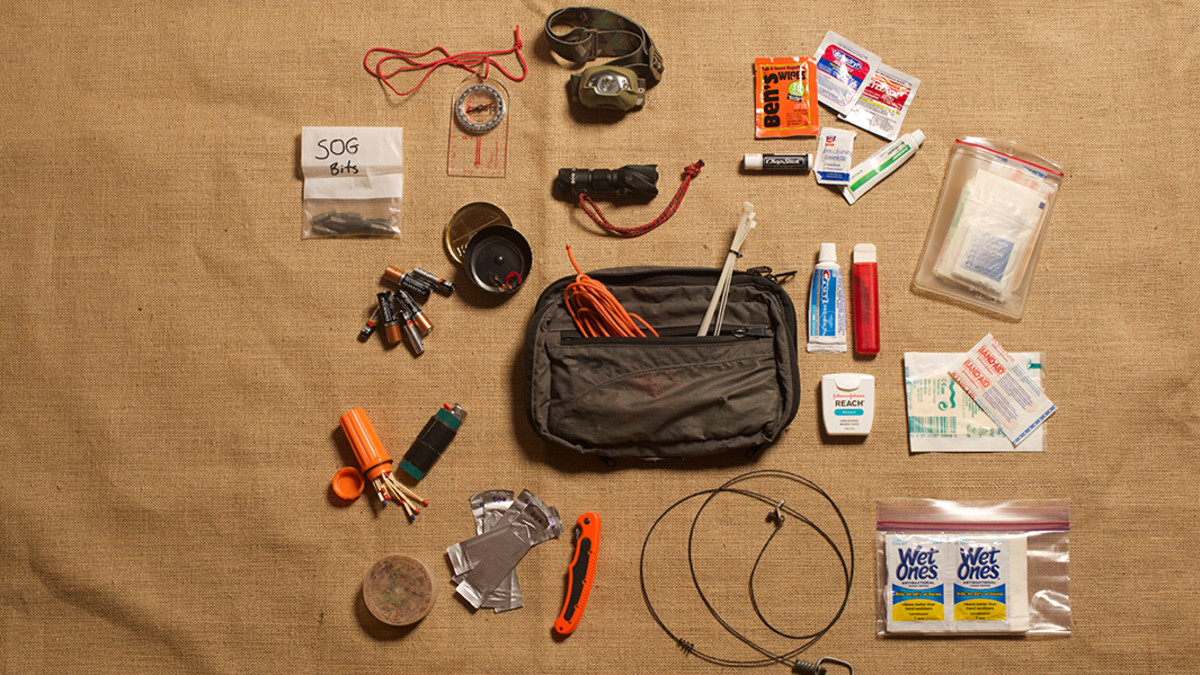
Emergency Communication Devices for Hiking
Having emergency communication devices is crucial for staying connected and calling for help in case of emergencies. Here are the essential emergency communication devices that should be included in your hiking survival gear checklist:
1. Cell Phone: Carry a fully charged cell phone with a portable charger or extra battery pack.
2. Personal Locator Beacon (PLB): A PLB is a small device that can send a distress signal to emergency services, even in remote areas without cell phone coverage.
3. Two-Way Radio: Consider carrying a two-way radio to communicate with other members of your hiking group or nearby hikers.
4. Signal Mirror: A signal mirror can be used to reflect sunlight and attract attention in case of emergencies.
5. Whistle: As mentioned earlier, a whistle can be used to signal for help if you are lost or injured.
When using your cell phone as an emergency communication device, remember that there may not always be cell phone coverage in remote areas. It is important to have alternative communication devices, such as a PLB or two-way radio, that do not rely on cell phone signals.
First Aid Kit for Hiking Emergencies
Carrying a first aid kit while hiking is essential for treating minor injuries and providing immediate medical attention until help arrives. Here are the essential items that should be included in your first aid kit for hiking:
1. Bandages and Dressings: Pack a variety of bandages and dressings to treat cuts, scrapes, blisters, and other minor injuries.
2. Antiseptic Wipes and Ointments: Carry antiseptic wipes and ointments to clean and disinfect wounds.
3. Pain Relievers: Include pain relievers such as ibuprofen or acetaminophen to alleviate pain and reduce inflammation.
4. Tweezers: Tweezers are useful for removing splinters, ticks, or other foreign objects from the skin.
5. Moleskin: Moleskin is a soft, adhesive material that can be used to prevent and treat blisters.
6. Emergency Medications: If you have any specific medical conditions or allergies, carry emergency medications such as an EpiPen or asthma inhaler.
7. CPR Mask: Consider including a CPR mask in your first aid kit for performing CPR safely.
It is important to familiarize yourself with the items in your first aid kit and know how to use them effectively. Consider taking a first aid and CPR course to learn essential life-saving skills before your hike.
Food and Water Essentials for Hiking
Carrying enough food and water while hiking is crucial for maintaining energy levels and staying hydrated. Here are the essential food and water items that should be included in your hiking survival gear checklist:
1. Water Bottles or Hydration Bladder: Carry enough water bottles or a hydration bladder to meet your hydration needs during the hike.
2. Water Purification System: As mentioned earlier, carry a water purification system to safely drink water from natural sources.
3. High-Energy Snacks: Pack high-energy snacks such as trail mix, energy bars, or dried fruits to keep you fueled during the hike.
4. Meals: Consider packing lightweight and easy-to-prepare meals such as dehydrated backpacking meals or instant noodles.
5. Cooking Gear: If you plan on cooking meals on the trail, pack lightweight cooking gear such as a stove, pot, and utensils.
When packing food and water for your hike, consider the duration of your hike and the availability of water sources along the trail. It is important to carry enough water to stay hydrated and pack food that provides sufficient energy for the duration of your hike.
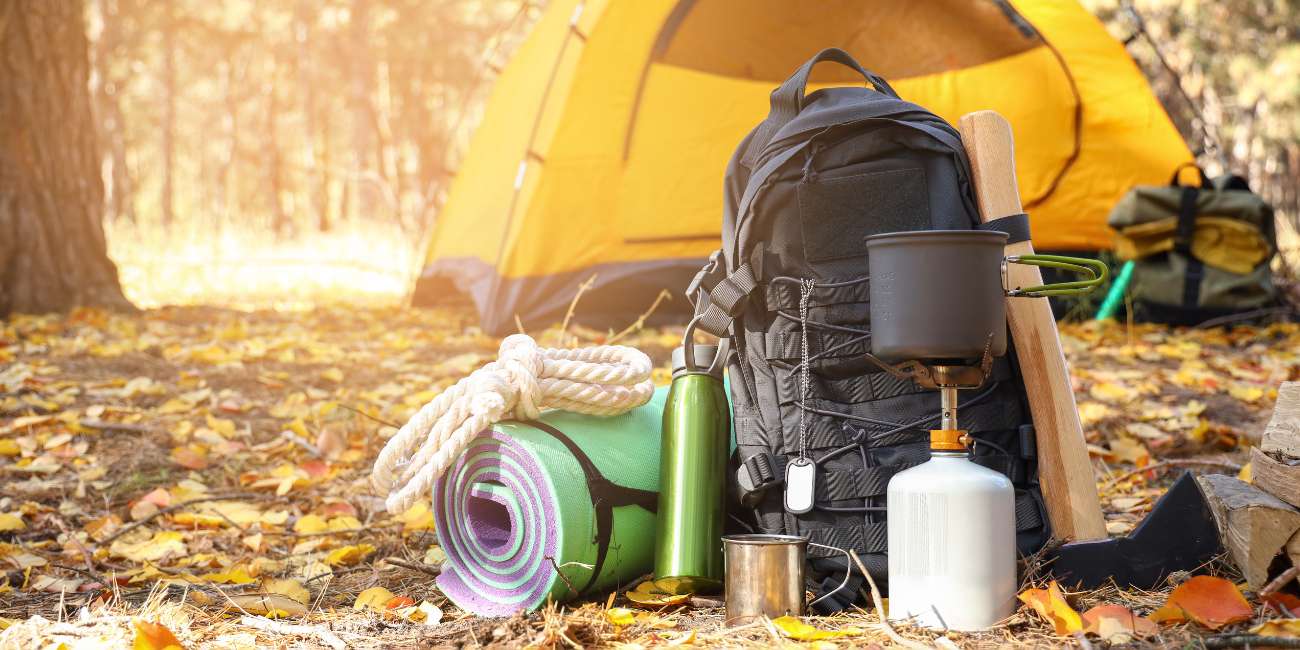
Shelter and Sleeping Gear for Hiking
Carrying shelter and sleeping gear while hiking is essential for staying protected from the elements and getting a good night's sleep. Here are the essential shelter and sleeping gear items that should be included in your hiking survival gear checklist:
1. Tent or Tarp: A lightweight tent or tarp provides protection from rain, wind, and insects.
2. Sleeping Bag: Choose a sleeping bag that is appropriate for the expected temperatures during your hike.
3. Sleeping Pad: A sleeping pad provides insulation and cushioning for a comfortable night's sleep.
4. Pillow: Consider packing a lightweight inflatable pillow for added comfort.
5. Bivy Sack or Emergency Blanket: As mentioned earlier, carry a lightweight emergency shelter as a backup in case of emergencies.
When choosing shelter and sleeping gear, consider factors such as weight, packability, and weather resistance. Opt for lightweight options that can be easily packed and set up. Additionally, make sure that your sleeping bag is appropriate for the expected temperatures during your hike.
Additional Hiking Survival Gear Checklist Items to Consider
In addition to the essential items mentioned earlier, there are several additional items that hikers may want to consider adding to their survival gear checklist:
1. Trekking Poles: Trekking poles provide stability and reduce strain on your knees and joints while hiking.
2. Sun Protection: Pack sunscreen, sunglasses, and a hat to protect yourself from the sun's harmful rays.
3. Insect Repellent: Carry insect repellent to protect yourself from mosquitoes, ticks, and other biting insects.
4. Repair Kit: Include a repair kit with items such as duct tape, zip ties, and a sewing kit for quick repairs on the trail.
5. Cash and Identification: Carry some cash and identification in case of emergencies or unexpected expenses.
6. Personal Items: Pack personal items such as toiletries, hand sanitizer, and toilet paper for hygiene purposes.
When choosing additional items for your hiking survival gear checklist, consider your personal needs and preferences. It is important to strike a balance between carrying essential items and keeping your pack weight manageable.
In conclusion, being prepared for hiking is crucial for a safe and enjoyable outdoor experience. By having a comprehensive hiking survival gear checklist, you can increase your chances of staying safe and surviving in case of emergencies. Remember to pack the essential items such as navigation tools, emergency communication devices, first aid kit, food and water, clothing and footwear, and shelter and sleeping gear. Additionally, consider adding additional items that may be useful based on your personal needs and preferences. Take the necessary steps to prepare for your next hiking adventure and enjoy the beauty of nature with peace of mind.
If you're planning a hiking adventure, it's crucial to be prepared with the right gear. One essential item to have is a hiking survival gear checklist. This comprehensive list will ensure you have everything you need to stay safe and comfortable during your outdoor excursion. To help you create the perfect checklist, check out this informative article on the top 10 must-have items for hiking survival gear. From navigation tools to first aid supplies, this article covers it all. Don't leave home without consulting this valuable resource!

FAQs
What is a hiking survival gear checklist?
A hiking survival gear checklist is a list of essential items that hikers should carry with them to ensure their safety and survival in case of an emergency or unexpected situation while hiking.
What are some essential items that should be on a hiking survival gear checklist?
Some essential items that should be on a hiking survival gear checklist include a map and compass, first aid kit, water filter or purification tablets, emergency shelter, fire starter, multi-tool, extra food and water, and a signaling device.
Why is it important to have a hiking survival gear checklist?
Having a hiking survival gear checklist is important because it helps hikers prepare for unexpected situations and emergencies while hiking. It ensures that hikers have the necessary tools and supplies to survive until help arrives.
What are some additional items that can be added to a hiking survival gear checklist?
Additional items that can be added to a hiking survival gear checklist include a headlamp or flashlight, extra clothing, insect repellent, sunscreen, a whistle, and a personal locator beacon.
How often should a hiking survival gear checklist be updated?
A hiking survival gear checklist should be updated regularly, especially before a new hiking trip. It is important to check the condition of the items on the list and replace any that are damaged or expired.
Can a hiking survival gear checklist vary depending on the location and season?
Yes, a hiking survival gear checklist can vary depending on the location and season. Hikers should consider the climate, terrain, and potential hazards of the area they will be hiking in when creating their checklist.
